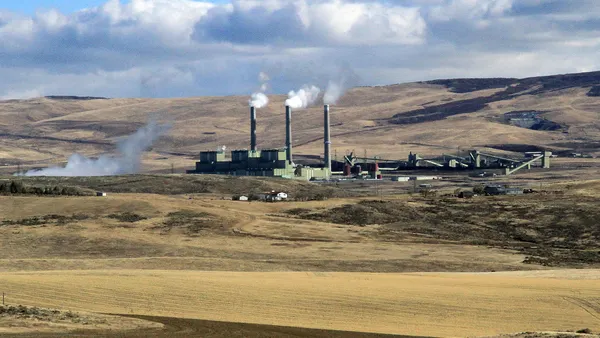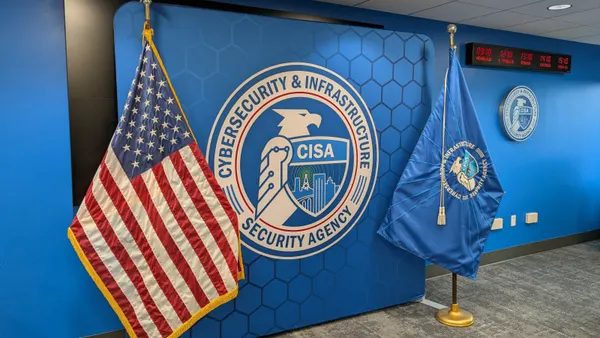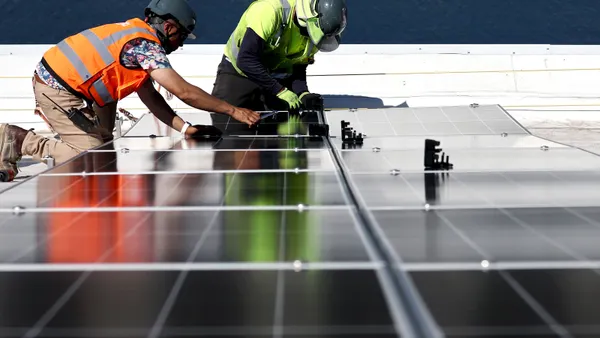Utilities have long relied on demand response programs to incentivize customers to reduce their energy usage during times of high demand.
In the past, utilities focused demand response programs almost exclusively on commercial and industrial customers who could reduce their large electricity usage when peak demand threatened grid reliability.
Today, utilities and regulators are increasingly emphasizing electric vehicles (EVs) and other distributed energy resources (DERs) in their demand response programs. For example, the California Public Utilities Commission recently approved changes to the state's Emergency Load Reduction Program, a demand response initiative aimed at avoiding rolling blackouts[1]. As part of the changes, regulators approved a new program that pays residential customers $2 per kilowatt-hour for load reductions during times of peak demand.
A particularly notable feature of this new program, and a sign of their importance for grid stability: EVs are now included in the initiative.
Rethinking demand response as EV adoption increases
In many ways, California's demand response changes reflect the increasing importance of distributed energy resources (DER) in simultaneously achieving ambitious decarbonization goals and maintaining grid reliability. Indeed, it's forecasted that cumulative DER capacity in America could reach 387 gigawatts by 2025[2]. By comparison, cumulative DER capacity in 2015 was 264 gigawatts.
EVs and EV charging will represent a large proportion of that growth. For example, it was recently estimated that sales of new passenger EVs are expected to surge from 3.1 million globally in 2020 to 14 million in 2025[3].
For sure, EV charging is expected to generate significant load growth, which has the potential to threaten grid stability. But utilities have the opportunity to proactively shape EV charging in ways that promote a resilient and reliable grid.
"Utilities are uniquely positioned to take the lead in shaping the grid of the future. Their experience and expertise allows them to drive the systems, upgrades and reinforcements required to welcome EV charging into the ecosystem with confidence and scalability," says Frank Fata, Global Head of Utilities and Energy Partnerships at FLO — a North American leader in EV charging solutions that has already deployed over 50,000 public, commercial and residential EV chargers. "Demand response continues to be an indispensable tool utilities can use to have their hand on the volume control, so to speak, controlling the load profiles for all these chargers coming online."
Why smart residential chargers benefit utilities and customers
While utilities may not have a choice about whether to get involved in the charging ecosystem, they can influence the type of charging infrastructure that is installed.
This is enormously consequential when it comes to tapping the flexibility of EV chargers as part of effective demand response initiatives. That's because there is a big difference between smart residential EV chargers and those that lack two-way communication and control capabilities. "A non-networked charger does not interact or receive any control or feedback signal from the utility. It is just there to perform on demand like any other electrical appliance," Fata says.
By contrast, smart chargers, like the FLO Home X5™, come equipped with communication, control and automation capabilities that maximize the benefits of demand response to both customers and utilities.
Here's why: One big concern that utilities have is that a large increase of EV charging at homes will lead to a huge spike in electricity demand at specific times of the day. "We come home from work at the end of the day and plug in for an immediate charging session. If all of us plug in at the end of the day, that will add load to an already challenging evening peak," Fata says.
Alleviating evening peaks on the power grid is a growing area of focus for utility forecasting scenarios aimed at understanding how increased EV charging will impact their networks. In addition to real-time load management, demand response offers operational features like gathering quantifiable data on sustainability efforts by directly measuring power delivered to EVs in their territory. This type of data translates into tons of greenhouse gas (GHG) savings over a given period helping utilities to demonstrate measurable decarbonization efforts. These are some of the key benefits of smart home charging coupled with demand response that non-networked charging infrastructure simply cannot provide.
Hassle-free demand response
What demand response using smart chargers can do is shift charging to times of the day or night when the grid doesn't have to meet such high demand and when many utilities offer attractive time-of-use rates to encourage off-peak charging. The communication and control capabilities of smart residential chargers make it extremely easy for customers to participate in demand response.
Think of it this way: EV drivers must be extremely motivated to take advantage of demand response programs if they lack a smart charger. To participate, EV owners have to manually plug-in or schedule their EV to charge during optimal times. This requires that customers understand a utility's rate schedule and remember the optimal time to charge. It's the opposite of convenient.
However, with a smart charger, an EV driver can still come home after work and plug in. The smart charger can then communicate with the utility or an aggregator and automatically fuel the car when it is financially advantageous to the driver and improves grid reliability. "This is the kind of demand response where EV owners don't really have to change their behavior," Fata says. "The charger has enough intelligence and can understand commands coming from the utility or the aggregator to behave in a way that is more beneficial to the utility and the customer, while ensuring that the vehicle is charged and ready when the driver needs it."
Smart chargers open the door to unique demand response programs in ways that non-networked EV chargers don't. But not all smart chargers are the same. When utilities assess chargers, uptime and reliability should be top priorities.
"We're seeing utilities raise the bar and recognize EV charging as critical infrastructure; they need to be sure to select vendors and technologies that stand up to the expectation that these units contribute to network control and need to be very reliable. It must be robust equipment that meets the uptime your customers expect" Fata says. "If those chargers aren't going to respond to control signals when they need to – they could pose a serious problem at-scale."
Enrolling in demand response programs has shown encouraging results by offering several ways utilities can show appreciation for participating members. Many utilities offer financial incentives for EV clients to schedule charging during off-peak periods; they have established a home charging electricity rate or can offer charging credits that can be used for public charging. Demand response is evolving beyond limiting load on networks to actively pooling this virtually aggregated supply back into competitive power markets.
It may not seem like an urgent issue now with relatively low EV adoption numbers in many communities. But the amount of EVs plugging into our neighborhood grid is growing, and that's likely to increase in the coming years. Managing the growing presence of EV charging loads on the grid is in every utility's strategic plan and figures prominently in their reliability projections. Reinforcing the network in anticipation of load growth has been in utility capital budgets for years and continues to be a top priority investment; however, these projects are costly and, take time. Demand response can buy utilities time and allow them to focus on the most critical investments by dependably curtailing load during peak periods and avoiding grid stress in the short term.
Making the most of that time requires utilities adopt controllable smart chargers that simultaneously meet customer expectations and enhance grid stability. It's a big opportunity for utilities. By integrating smart, intelligent and highly reliable EV chargers, utilities serve customers better and benefit from real-time load visibility, flexibility and reliability.
Sources:
[1] "Emergency Load Reduction Program." California Public Utilities Commission, 2021, URL.
[2] "The next five years will see massive distributed energy resource growth." Wood Mackenzie, 23 June 2020, URL.
[3] "Electric Vehicle Outlook 2021." Bloomberg New Energy Finance, 2021, URL.










